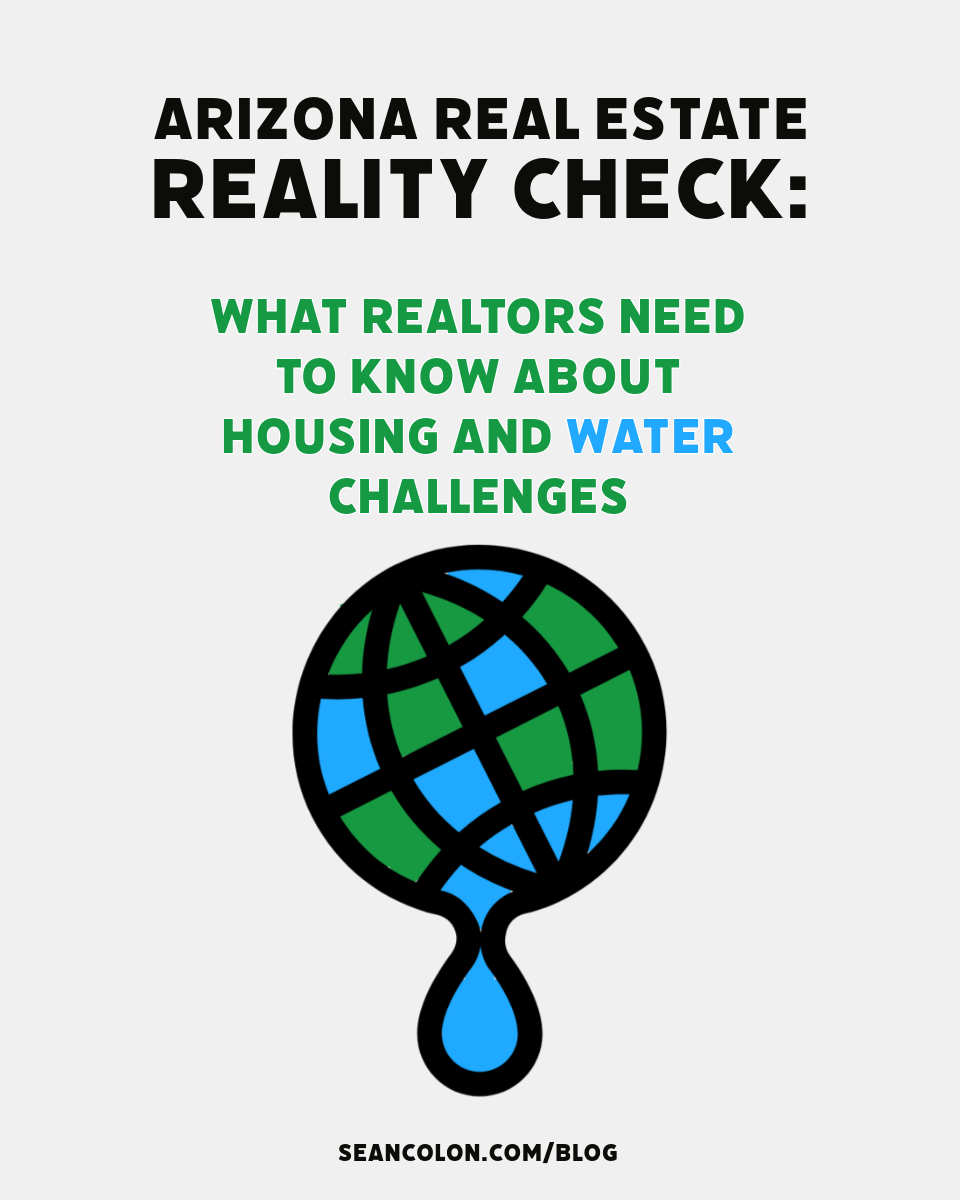By Sean Colón
Arizona has long been marketed as a place of sunshine, affordability, and wide-open opportunity. For decades, realtors could confidently sell the state’s “low cost of living” story to out-of-state buyers. But times are changing—and quickly.
A new study from Arizona State University’s Morrison Institute for Public Policy shows that housing costs in Arizona are now outpacing wages and surpassing the national average. Combined with water resource concerns and affordability challenges, realtors in Arizona face a new reality: the need to guide clients with data, strategy, and realistic expectations.
Let’s break down the most important takeaways from the report and what they mean for your real estate business.
Housing Costs in Arizona Are Rising Faster Than Incomes
According to the 2024 State of Housing in Arizona Report:
Home prices nearly doubled between 2010 and 2014, after adjusting for inflation.
By March 2024, the median Arizona home price reached $427,272.
Median rent is now $1,600, which surpasses the national average.
Manufactured homes, once an affordable option, rose by 80% between 2017 and 2022, averaging more than $160,000 in Arizona.
The problem? Incomes are not keeping up. Between 2010 and 2023, housing values rose seven times faster than household income. Since 2019, renter costs are up 23%, while incomes have grown only 4%.
Realtor Takeaway
This affordability gap makes it harder for many first-time buyers and renters to enter the market. As an Arizona realtor, this is where your expertise matters: helping clients navigate creative financing options, connecting them with down payment assistance programs, and positioning homes as long-term investments despite today’s high entry costs.
👉 A great resource to share with clients: Arizona Department of Housing Homebuyer Programs.
The Rental Market: A Tight Squeeze
The report revealed that only 39% of Arizona workers at median wages can afford a one-bedroom apartment, and just 25% can afford a two-bedroom. For minimum-wage earners, the numbers are even more dire—they’d need to work 76 hours per week just to cover rent on a modest one-bedroom.
Realtor Takeaway
For realtors, this makes rental property investment a strategic opportunity. Investors are looking for markets with high rental demand, and Arizona checks that box. Positioning yourself as an advisor for rental investors can open new income streams for your business.
Evictions and Homelessness on the Rise
In 2024, Arizona recorded 106,587 eviction filings, the highest number on record. With rents climbing and wages stagnant, many households are slipping through the cracks.
Realtor Takeaway
While this statistic is sobering, it also underscores the importance of affordable housing initiatives. Staying informed about city programs, tax credits, and mixed-use developments allows you to help buyers and investors see opportunity where others see risk.
For example:
Tempe invested $20 million into affordable housing, converting a former grocery store into 400 new homes.
Phoenix launched a Housing Trust Fund with an initial $2 million allocation.
Tucson and Pima County secured a $7 million HUD grant to reduce housing barriers.
These efforts create both challenges and openings for realtors who understand where growth is happening.
Water: Arizona’s Other Big Challenge
No discussion of Arizona real estate is complete without talking about water. Experts at the Housing and Water Policy Summit highlighted two major stress points:
The Colorado River, which supplies 35% of Arizona’s water, has been in a 30-year megadrought. A new management plan is due soon, but future allocations remain uncertain.
Groundwater, which provides 40% of Arizona’s supply, faces restrictions. Developers must prove access to a 100-year water supply before building.
Realtor Takeaway
For realtors, this means staying aware of water policy when advising clients, especially in fast-growing areas outside metro Phoenix. Concerns about long-term water availability can directly impact property values and development.
Resource to bookmark: Arizona Water Blueprint — an interactive tool showing water use data across the state.
The Bigger Picture: Trees, Shade, and Quality of Life
Another overlooked factor in Arizona real estate is the balance between heat mitigation and resource use. Planting trees for shade makes homes and neighborhoods more livable, but it’s costly and water-intensive. Maricopa County estimates it would take 2.5 million trees, costing $2.6 billion, plus $500 million per year to maintain.
Realtor Takeaway
For clients concerned about livability, highlight the value of homes in communities already investing in heat-friendly infrastructure—like shaded walkways, water-efficient landscaping, and HOA-funded greenery. These details may not show up in MLS listings but can be a strong selling point.
What This Means for Arizona Realtors
Arizona real estate is no longer the easy “affordable sunshine” story it once was. But that doesn’t mean opportunity is gone—it just looks different. Here’s how realtors can adapt:
Educate your clients with real data about affordability and water resources.
Target investor clients who see rental demand as a long-term play.
Stay plugged in to local housing initiatives in Phoenix, Tempe, and Tucson.
Highlight lifestyle upgrades like shade, walkability, and energy efficiency as selling points.
The Arizona housing market is challenging, but challenges create space for realtors who bring expertise, creativity, and a solutions-focused mindset to the table.
By the way, I help realtors improve their online and social media presence by providing beautiful photos of their listings. That is why I’ve created this FREE HOME PREP LIST for your clients to help your listings look their best. Feel free to share.



